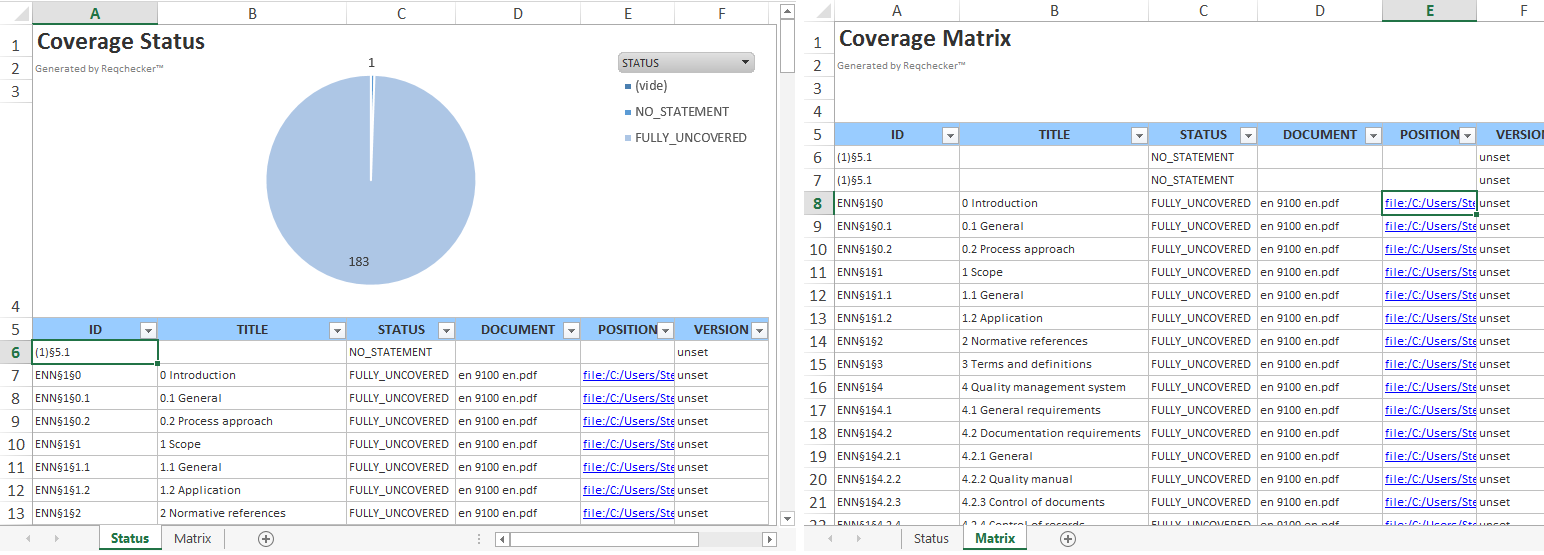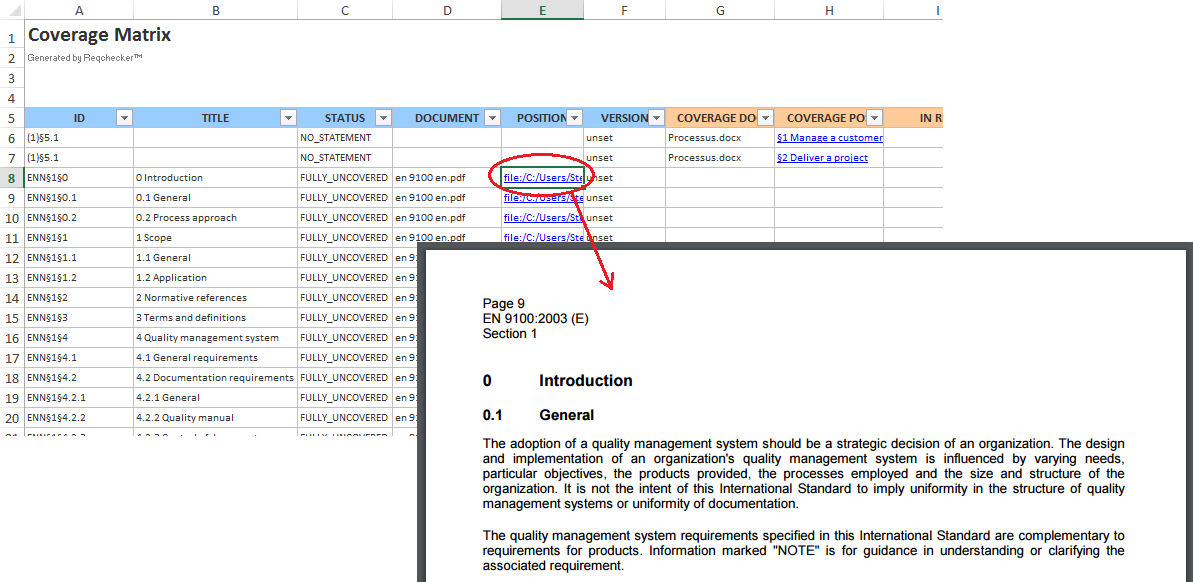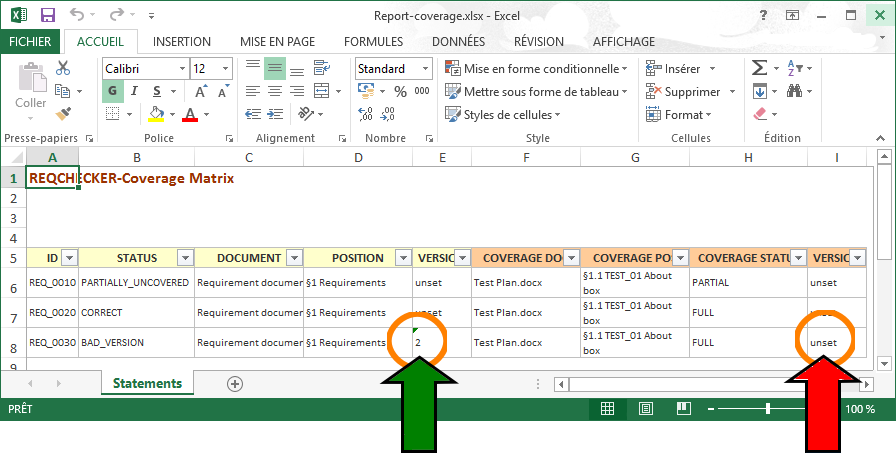Coverage Matrix
(REQCHECKER™ PRO only)
Overview
The Coverage Matrix presents all statements and their coverages. It allows to navigate through coverage tree and source files.
The links to source documents are relative if the document are stored in the same folder. In this case the report and the documents can be opened on another computer.
Multiple statements are highlighted in the verification report. This help to find and fix them.
The report presents two sheets:
- Status sheet: list of all requirement with their status. The pie can be filtered by source document.
- Matrix sheet: the matrix itself with a line for each statement and/or coverage

Hyper-links allow to navigate to the source statement or to the coverage.

Format
The format is a MICROSOFT EXCEL spreadsheet XLSX.
Status sheet
Each line presents the synthesis of a requirement:
- ID column: REQUIREMENT ID
- STATUS column: requirement status, see Requirement status list
- TITLE column: requirement title
- TEXT column: requirement text
- MANAGEMENT RATE column: management rate of this requirement, see Management Rate
- COVERAGE RATE column: coverage rate of this requirement, see Coverage Rate
- DOCUMENT column: file name of the source document that contains the statement
- POSITION column: position of the statement in the source document
- VERSION column: statement version, see Impact analysis
- LINKED column: related statement(s)
- Other columns contain the value of each statement custom tags, see Custom tags
Matrix sheet
Each line presents a couple { statement , coverage }. If the requirement has not coverage, a single line presents the statement information and coverage information are blank. If the requirement has coverages, the report contains one line for each coverage, the statement information are the same for these lines, the coverage information are filled with different values.
Some columns may be show/hidden depending on report options.
- ID column: REQUIREMENT ID
- STATUS column: requirement status, see Requirement status list
- TITLE column: requirement title
- TEXT column: requirement text
- MANAGEMENT RATE column: management rate of this requirement, see Management Rate
- COVERAGE RATE column: coverage rate of this requirement, see Coverage Rate
- DOCUMENT column: file name of the source document that contains the statement
- POSITION column: position of the statement in the source document
- VERSION column: statement version, see Impact analysis
- LINKED column: related statement(s)
- Other columns contain the value of each statement custom tags, see Custom tags
- COVERAGE DOC column: file name of the source document that contains the coverage
- COVERAGE POS column: position of the coverage in the source document
- COVERED BY column: ID of the requirement that contains the coverage tag, if any.
- COVERAGE STATUS column: status of the coverage, see Coverage status list
- COVERAGE VERSION column: version of the requirement that is provided by the cover tags, or unset if no version is provided in the coverage. The coverage version is compared with the requirement version to determine the BAD_VERSION_ERROR status, see Impact analysis
- Other columns contain the value of each coverage custom tags, see Custom tags
Columns VERSION and COVERAGE VERSION are used to compute the impact analysis.
